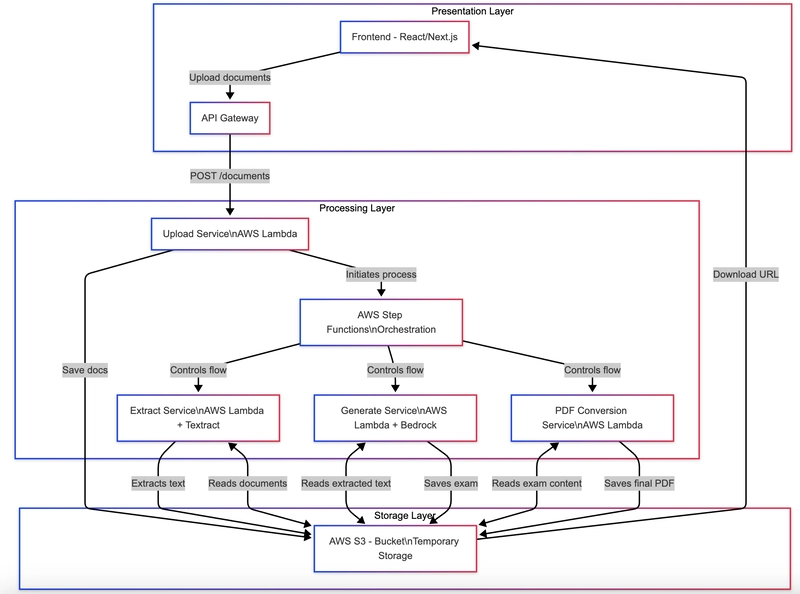Async, Await, Promises ... in javascript
JavaScript provides several mechanisms for handling asynchronous operations, with async and await being the most modern and widely used. Let's break them down along with other asynchronous keywords. 1. Async & Await These keywords allow you to write asynchronous code that looks synchronous, making it easier to read and manage. Async Function Declaring a function as async means it always returns a Promise. Inside an async function, you can use the await keyword to pause execution until a Promise resolves. Example: async function fetchData() { return "Hello, Async!"; } fetchData().then(console.log); // Output: "Hello, Async!" Await Keyword The await keyword pauses the execution inside an async function until the Promise resolves, avoiding the need for .then(). Helps keep the code more readable compared to chaining .then() callbacks. Example: async function fetchData() { const data = await fetch("https://jsonplaceholder.typicode.com/todos/1"); const json = await data.json(); console.log(json); } fetchData(); 2. Promises Before async/await, JavaScript used Promises for handling asynchronous operations. A Promise represents a value that may be available now, or later, or never. Example: const myPromise = new Promise((resolve, reject) => { setTimeout(() => resolve("Promise Resolved!"), 2000); }); myPromise.then(console.log); // Output after 2 seconds: "Promise Resolved!" 3. Callback Functions Older JavaScript code often relied on callbacks, but they led to "callback hell" when too many nested functions were used. Example: function fetchData(callback) { setTimeout(() => { callback("Data received!"); }, 2000); } fetchData(console.log); // Output after 2 seconds: "Data received!" This approach became harder to maintain, leading to the rise of Promises and async/await. 4. Other Asynchronous Keywords Promise.all() Runs multiple Promises in parallel and waits for all of them to resolve. const p1 = Promise.resolve("First"); const p2 = new Promise(resolve => setTimeout(() => resolve("Second"), 1000)); Promise.all([p1, p2]).then(console.log); // ["First", "Second"] after 1 sec Promise.race() Resolves as soon as one Promise resolves. const p1 = new Promise(resolve => setTimeout(() => resolve("First"), 3000)); const p2 = new Promise(resolve => setTimeout(() => resolve("Second"), 1000)); Promise.race([p1, p2]).then(console.log); // Output: "Second" (fastest one wins) When to Use Each Method? Use async/await for cleaner and more readable asynchronous code. Use Promises when working with APIs and chaining multiple async operations. Use Promise.all() for running async tasks in parallel. Use Promise.race() when only the first resolved result matters.

JavaScript provides several mechanisms for handling asynchronous operations, with async and await being the most modern and widely used. Let's break them down along with other asynchronous keywords.
1. Async & Await
These keywords allow you to write asynchronous code that looks synchronous, making it easier to read and manage.
Async Function
- Declaring a function as
asyncmeans it always returns a Promise. - Inside an
asyncfunction, you can use theawaitkeyword to pause execution until a Promise resolves.
Example:
async function fetchData() {
return "Hello, Async!";
}
fetchData().then(console.log); // Output: "Hello, Async!"
Await Keyword
- The
awaitkeyword pauses the execution inside anasyncfunction until the Promise resolves, avoiding the need for.then(). - Helps keep the code more readable compared to chaining
.then()callbacks.
Example:
async function fetchData() {
const data = await fetch("https://jsonplaceholder.typicode.com/todos/1");
const json = await data.json();
console.log(json);
}
fetchData();
2. Promises
Before async/await, JavaScript used Promises for handling asynchronous operations. A Promise represents a value that may be available now, or later, or never.
Example:
const myPromise = new Promise((resolve, reject) => {
setTimeout(() => resolve("Promise Resolved!"), 2000);
});
myPromise.then(console.log); // Output after 2 seconds: "Promise Resolved!"
3. Callback Functions
Older JavaScript code often relied on callbacks, but they led to "callback hell" when too many nested functions were used.
Example:
function fetchData(callback) {
setTimeout(() => {
callback("Data received!");
}, 2000);
}
fetchData(console.log); // Output after 2 seconds: "Data received!"
This approach became harder to maintain, leading to the rise of Promises and async/await.
4. Other Asynchronous Keywords
Promise.all()
Runs multiple Promises in parallel and waits for all of them to resolve.
const p1 = Promise.resolve("First");
const p2 = new Promise(resolve => setTimeout(() => resolve("Second"), 1000));
Promise.all([p1, p2]).then(console.log); // ["First", "Second"] after 1 sec
Promise.race()
Resolves as soon as one Promise resolves.
const p1 = new Promise(resolve => setTimeout(() => resolve("First"), 3000));
const p2 = new Promise(resolve => setTimeout(() => resolve("Second"), 1000));
Promise.race([p1, p2]).then(console.log); // Output: "Second" (fastest one wins)
When to Use Each Method?
-
Use
async/awaitfor cleaner and more readable asynchronous code. - Use Promises when working with APIs and chaining multiple async operations.
-
Use
Promise.all()for running async tasks in parallel. -
Use
Promise.race()when only the first resolved result matters.


































































![Mike Rockwell is Overhauling Siri's Leadership Team [Report]](https://www.iclarified.com/images/news/97096/97096/97096-640.jpg)
![Instagram Releases 'Edits' Video Creation App [Download]](https://www.iclarified.com/images/news/97097/97097/97097-640.jpg)
![Hands-On With 'iPhone 17 Air' Dummy Reveals 'Scary Thin' Design [Video]](https://www.iclarified.com/images/news/97100/97100/97100-640.jpg)
![Inside Netflix's Rebuild of the Amsterdam Apple Store for 'iHostage' [Video]](https://www.iclarified.com/images/news/97095/97095/97095-640.jpg)
















![What iPhone 17 model are you most excited to see? [Poll]](https://9to5mac.com/wp-content/uploads/sites/6/2025/04/iphone-17-pro-sky-blue.jpg?quality=82&strip=all&w=290&h=145&crop=1)

















































































































































































![[The AI Show Episode 144]: ChatGPT’s New Memory, Shopify CEO’s Leaked “AI First” Memo, Google Cloud Next Releases, o3 and o4-mini Coming Soon & Llama 4’s Rocky Launch](https://www.marketingaiinstitute.com/hubfs/ep%20144%20cover.png)






















































































































![BPMN-procesmodellering [closed]](https://i.sstatic.net/l7l8q49F.png)
















































-All-will-be-revealed-00-35-05.png?width=1920&height=1920&fit=bounds&quality=70&format=jpg&auto=webp#)

































































